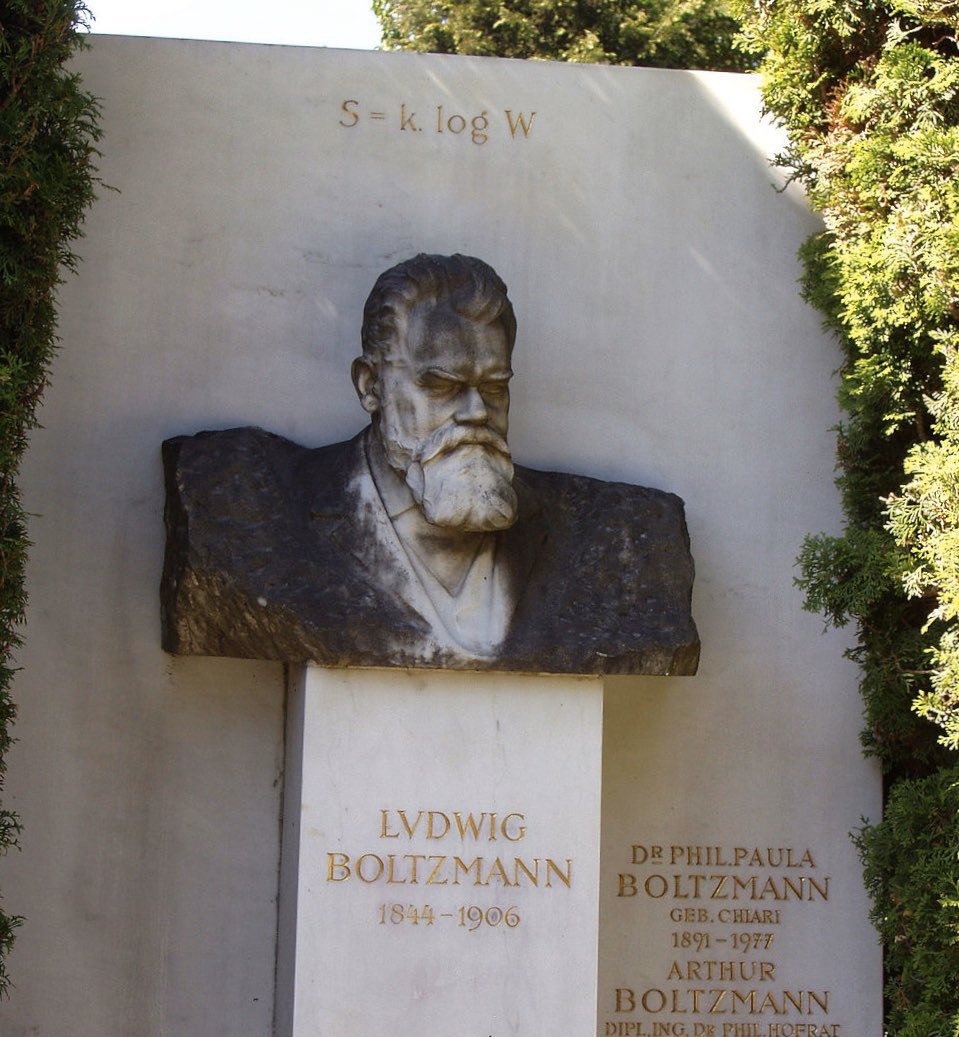
Happy #Quantum Day!
Max Planck presented work on blackbody radiation to the German Physical Society #OTD in 1900. His novel “quantum hypothesis” suggested that matter emits and absorbs light with frequency f only in discrete chunks of energy E=hf.
Image: AIP
Max Planck presented work on blackbody radiation to the German Physical Society #OTD in 1900. His novel “quantum hypothesis” suggested that matter emits and absorbs light with frequency f only in discrete chunks of energy E=hf.
Image: AIP

Planck’s quantum hypothesis would revolutionize physics, but he initially thought it wasn’t real. He suspected that the interaction of matter and radiation was tremendously complicated but still governed by the physics known at the time — what we now call “classical physics.”
Invoking quanta of radiation to derive the blackbody emission spectrum was, it seemed to Planck, just a mathematical trick that somehow encapsulated all that complication.
But it was a trick that *worked*. Previous efforts to derive the blackbody emission spectrum using classical physics gave nonsensical results at high frequencies. Replace continuous emission with discrete quanta and it works out perfectly.
Evidence for the reality of quanta began with Einstein’s explanation of the photoelectric effect in 1905. The proposal that radiation of frequency f exists only in discrete chunks of energy E=hf was the first result of Einstein’s “Miracle Year.”
https://twitter.com/mcnees/status/1270347171821424640
Many physicists remained skeptical. But Arthur Compton’s 1923 explanation of X-rays scattering off electrons was near-incontrovertible evidence that quanta were real.
https://twitter.com/mcnees/status/1304080016356061186
(More here on Compton Scattering and proof of the reality of quanta.)
physics.aps.org/story/v13/st8
physics.aps.org/story/v13/st8
Anyway, this was a common narrative in the transformative years of late 19th and early 20th century physics.
https://twitter.com/mcnees/status/892149194353291265
Planck’s hypothesis was in fact a deep statement about the way Nature works. Radiation of frequency f comes in discrete chunks of energy E=hf. It's the nature of radiation, not some artifact of a complicated interaction with matter.
Nowadays we refer to the proportionality constant h as "Planck's constant." In the SI system it takes the value h=6.626 x 10⁻³⁴ kg*m²/s, or 4.136 x 10⁻¹⁵ eV*s. As far as we can tell it is a fundamental constant that is hardwired into our Universe.
The results of Planck’s December 14th lecture were submitted to Annalen der Physik a few weeks later, on January 7th, and published not long after that. You can see the original (in German) here:
onlinelibrary.wiley.com/doi/epdf/10.10…
onlinelibrary.wiley.com/doi/epdf/10.10…

An English translation of Planck’s paper, taken from Dirk ter Haar’s “The Old Quantum Theory,” is available here:
hermes.ffn.ub.es/luisnavarro/nu…
hermes.ffn.ub.es/luisnavarro/nu…

Something that isn’t as widely known is that “h” is not the only fundamental constant that was introduced during Planck’s presentation to the German Physical Society #OTD in 1900!
Planck was looking at emission and absorption by blackbodies, so he needed a way to relate energies and temperatures. Thus, he had to introduce what we now refer to as “Boltzmann’s constant.” 

That’s right, the factor of “k” that appears in the formula “S = k log W” — the formula engraved on Boltzmann’s memorial! — was actually introduced by Max Planck. Boltzmann expressed his results in terms of the ideal gas constant R.
Image: user Daderot on Wikipedia
Image: user Daderot on Wikipedia

The transition from classical to quantum physics went very smoothly.
(Sorry, I don’t know who made this image.)
(Sorry, I don’t know who made this image.)

If you're speaking to a physicist you should know that the term "quanta" is outdated. Most of us say "chonks" now.
This is especially important if you are just emailing a physicist out of the blue. Be sure to use "chonks" and "chonky mechanics" so they know that you are serious and not some crackpot.
So Happy #Quantum Day. Or, as physicists would say, Joyous Chonk-iversary. 

• • •
Missing some Tweet in this thread? You can try to
force a refresh












